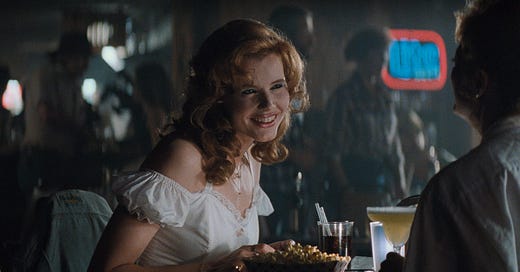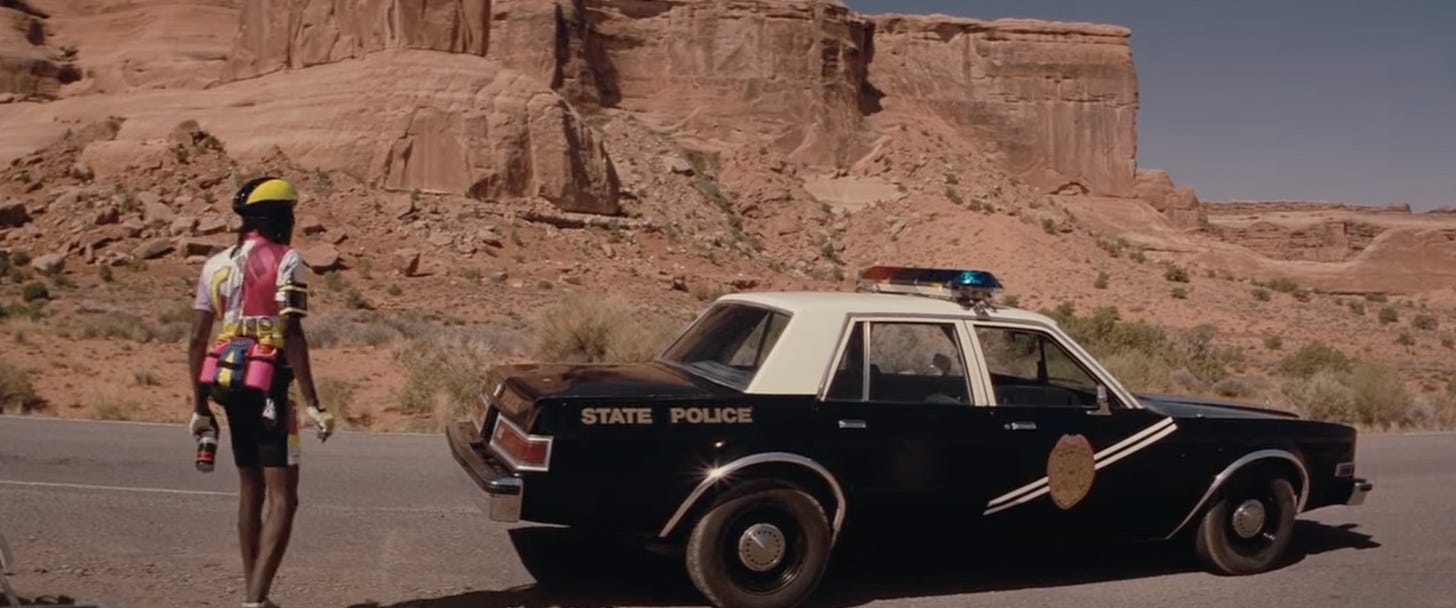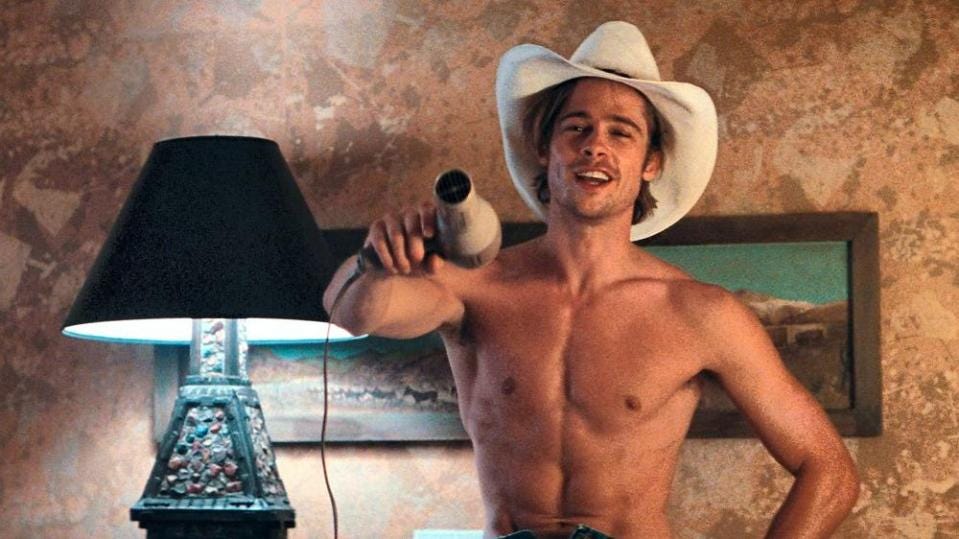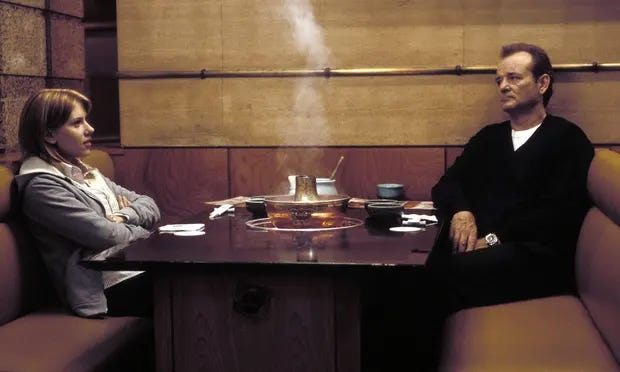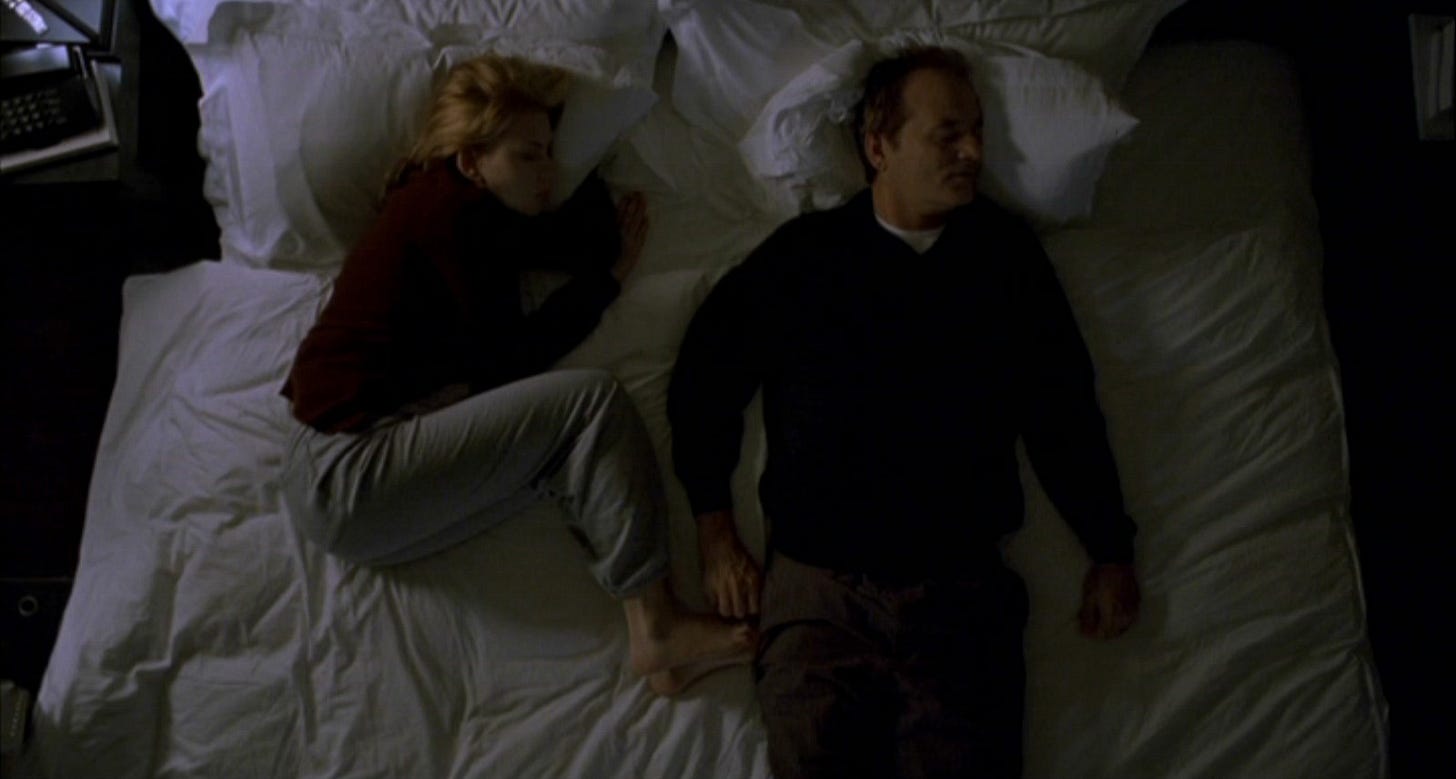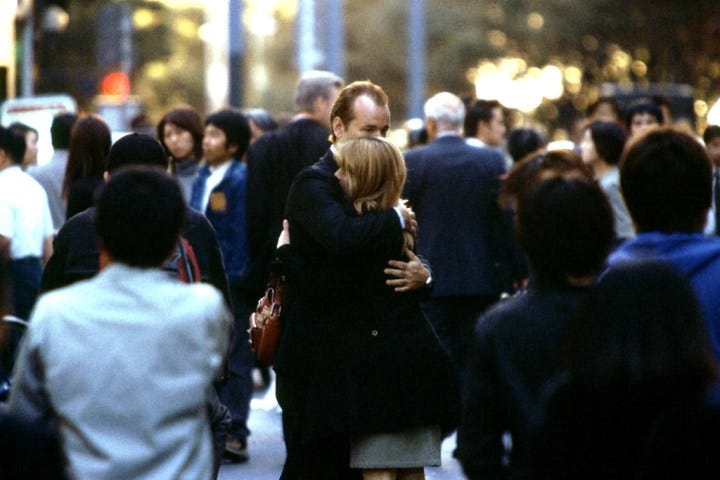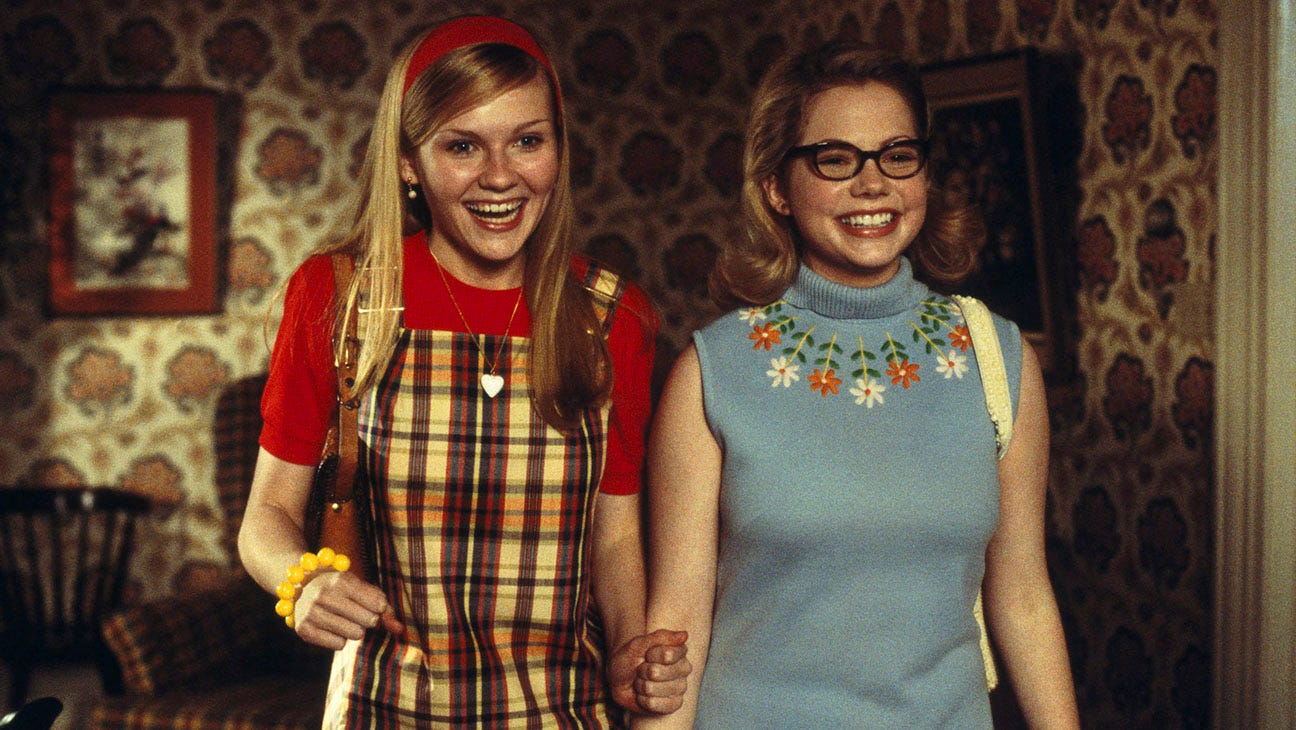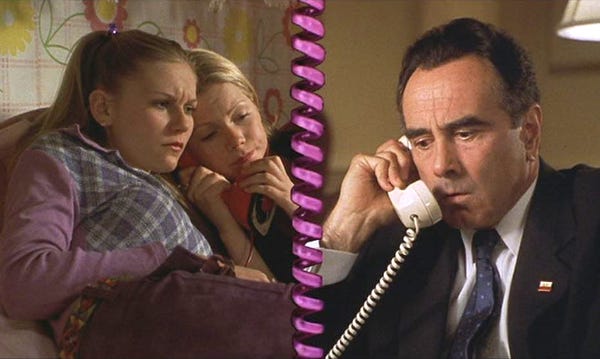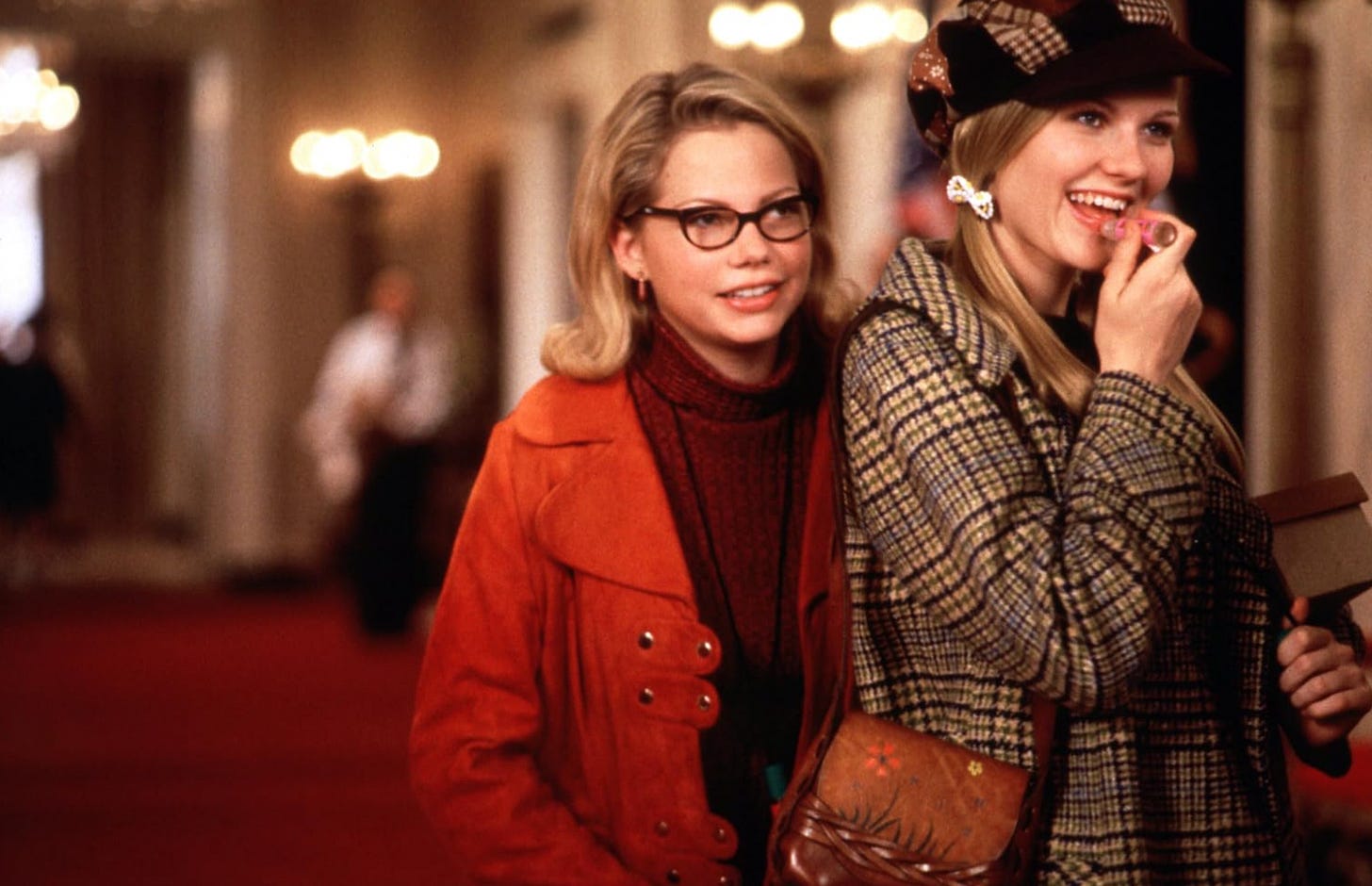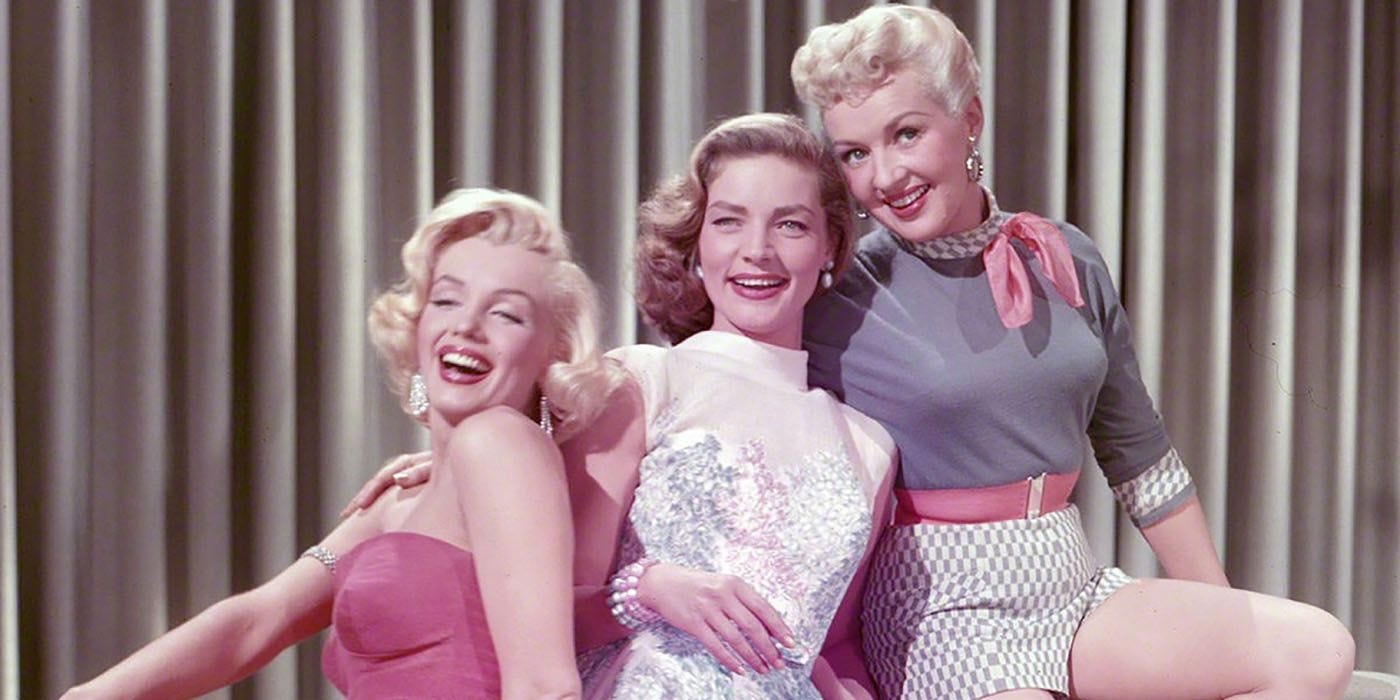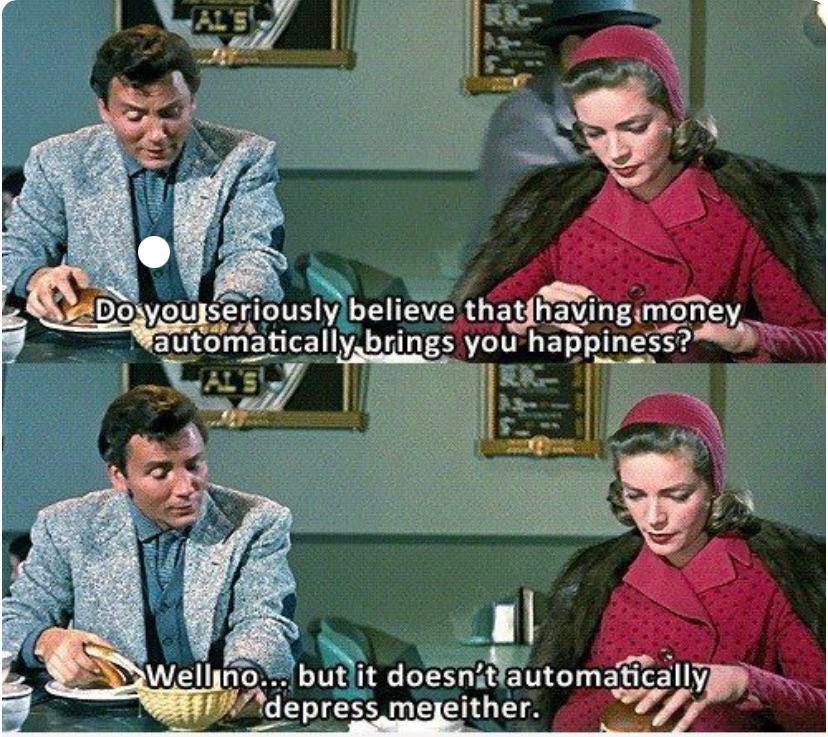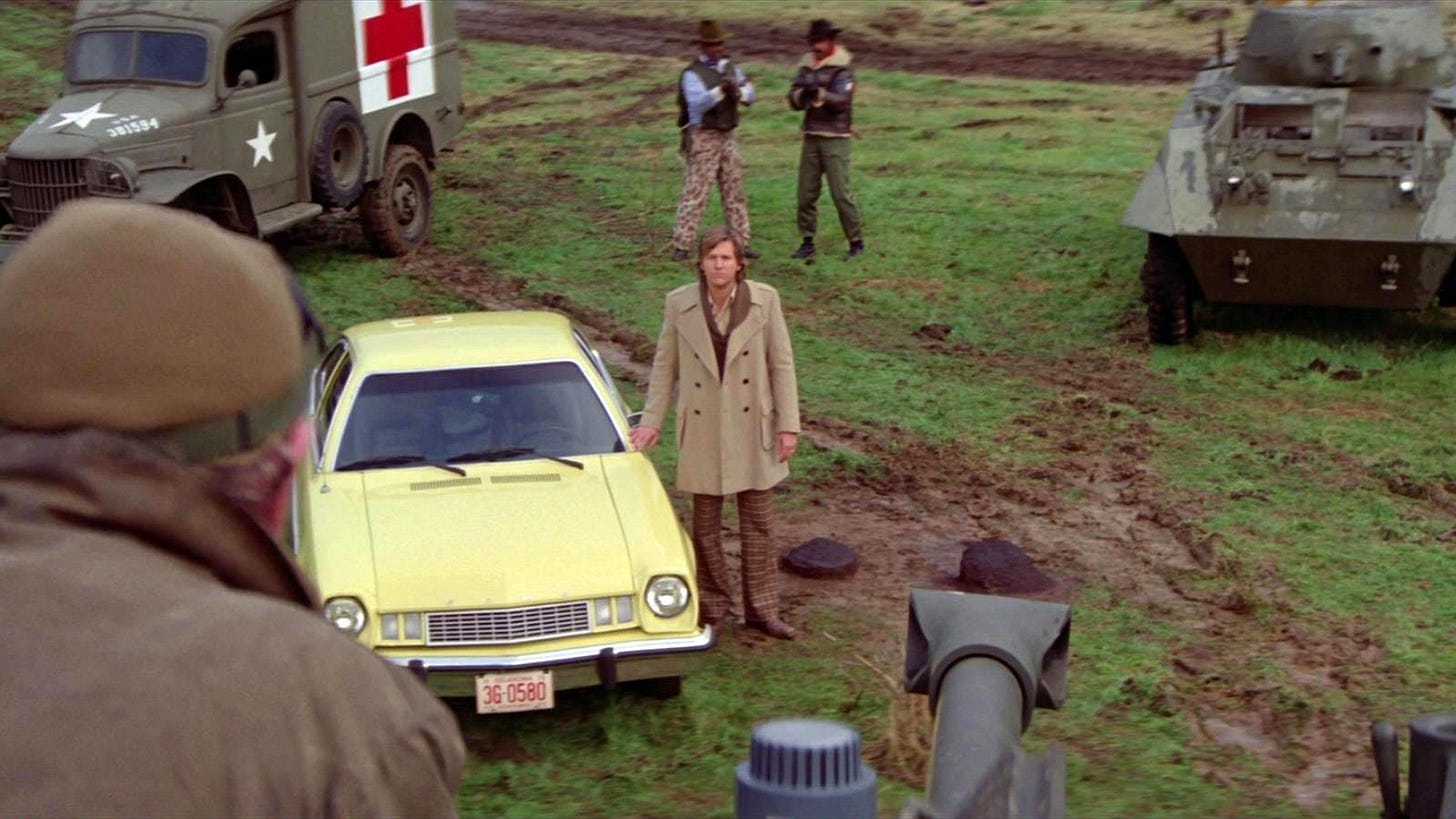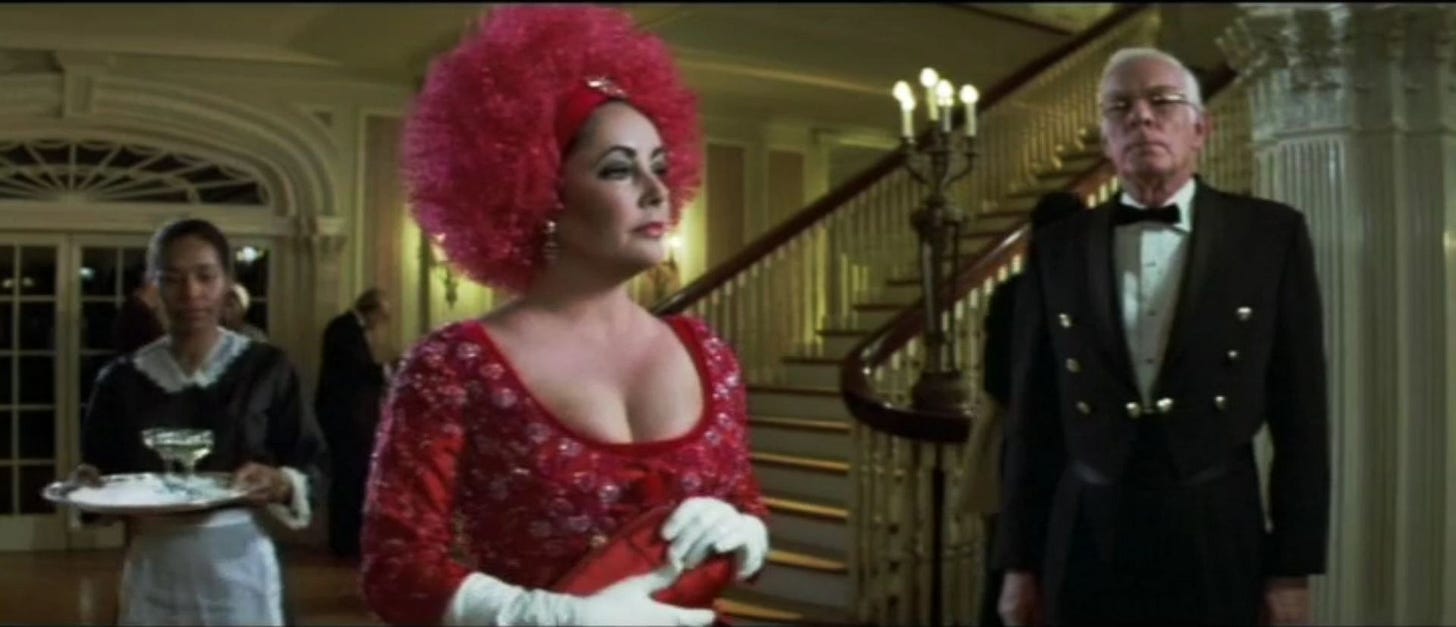Movies of the Month: August [2023]
Alt Title: All The President's Men (1976) Walked So Dick (1999) Could Rollerblade to ABBA
ICYMI: ~per my last email~, book and movie reviews will drop on the last day of the month going forward, followed by the newsletter on the 1st.
So, without further ado, here’s a rundown of what I watched in August:
Thelma and Louise (1991, dir. Ridley Scott) — About three quarters of the way through the film, a Black biker pulls to the side of the road for a water and weed break. “I Can See Clearly Now” by Johnny Nash blares in the background as an abandoned police cruiser confronts him. The trunk rattles, and the police officer trapped inside declares his profession, an attempt to signal altruism, a cry for help. A lone finger finds its way through one of two holes in the trunk. The biker inches forward, his face drawing closer and closer to the police officer’s freed flesh, until he blows smoke into the trunk’s second hole. From my perspective, this moment encapsulates the notion of Thelma and Louise as, at its core, a film about what happens when the people who suffer under the status quo stop cooperating with it.
When interviewed for a feature on the making of Thelma and Louise for Vanity Fair in 2012, screenwriter Callie Khouri, discussing how she initially got the idea for the story, said: “I saw, in a flash, where those women started and where they ended up. Through a series of accidents, they would go from being invisible to being too big for their world to contain, because they'd stopped cooperating with things that were absolutely preposterous, and just became themselves.” An exchange toward the end of the film encapsulates this idea, when Louise (played by Susan Sarandon) turns to Thelma (played by Geena Davis) and says: “You've always been crazy. This is just the first chance you've ever had to really express yourself.”
Yes, this movie is quite literally about ride-or-die female friendship, but, within that, it tackles what happens when systemic inefficiency becomes inevitability, how that knowledge, that resignation, has the power to shape the course of lives. It explores freedom in its rawest form, the ramifications that come with embracing it wholeheartedly. Hopeful and fatalistic, Thelma and Louise comically captures womanhood through the prism of extreme circumstances.
Also, as The Ringer put it in a 2020 headline: “Brad Pitt took his shirt off in Thelma and Louise. Men were never the same.” So true.
Where to Watch: Hulu (premium subscription), Amazon Prime Video (premium subscription)
Lost in Translation (2003, dir. Sofia Coppola) — Sofia Coppola plus romantic dramedy, and it took me twenty years to see it. I know, I know.
This film follows fading American actor Bob Harris (played by Bill Murray) as he travels to Tokyo to shoot a whisky commercial. He soon crosses paths with new Yale graduate and newlywed Charlotte (played by Scarlett Johansson). Having followed her celebrity photographer husband (played by Giovanni Ribisi) on his work trip, Charlotte finds herself more or less abandoned at the Park Hyatt Tokyo, spending her spare time listening to cassettes on how to find your purpose while her husband fawns over a Hollywood actress (played by Anna Faris). Bob and Charlotte come together at and beyond the hotel bar, finding a sense of safety in each other as they navigate a foreign city and an otherwise empty period in their lives.
**spoilers ahead**
As I see it, Lost in Translation serves as one of the purest encapsulations of romantic friendship, of the value of intergenerational connection. In one scene partway through the film, Bob and Charlotte lay on his bed fully clothed. She talks through the various avenues she’s tried to pursue postgrad, expressing resignation at her failed attempts to become a writer. He encourages her to keep writing, and she says: “But I’m so mean.” His response? “Mean’s okay.” He provides her with a perspective shaped by age, one free of concern with external perception. When they eventually fall asleep, their sole physical contact comes in the form of him holding her foot.
Where his age offers her perspective, her youth steeps his life in joy, in adventure, during the brief period they spent together. In a particularly comedic sequence, Bill joins Charlotte and a group of her Tokyo-based friends for a night out that culminates in karaoke. He appears out of place throughout the evening, going so far as to turn his shirt inside out after she makes fun of its very loud and Very 2003™ camouflage pattern. But the group still embraces him and vice versa, as evidenced by the warm, drunken atmosphere as Bob sings along to Elvis Costello. The tone turns as Bob settles into his second song, “More Than This” by Roxy Music. Background noise fades out, and he seems to sing the whole of it directly to Charlotte. Bryan Ferry wrote the song about a doomed love affair, instilling the serenade with a prescient sense of melancholy.
The film serves as a master class in mood, as is the case with much of Coppola’s work. Silence communicates the characters’ isolation and loneliness as effectively as music, as discourse. At one point, Bob, when asked about Tokyo on the phone with his wife, says: “It’s not fun. It’s just very, very different.” That statement, in conjunction with moment after moment of solitude, captures the alienation that can often come with navigating an unfamiliar landscape alone. Moments of miscommunication serve to underscore Bob, in particular, as a stranger in a strange land, the most obvious occurring as he films and re-films his whisky commercial; those flashes of misunderstanding, infused with outdated orientalism, resonated less with me than the moments of alienation communicated through silence.
Of course, no discussion of Lost in Translation is complete without touching on the ending. Although much has been made of what Bob whispers in Charlotte’s ear, a different detail stood out for me. He hugs her first, a deep embrace, then kisses her. Friendship first, romance second.
Where to Watch: Netflix (subscription), Amazon Prime Video ($3.79), New Beverly Cinema on 9.1 at 2:00 PM for my LA subscribers
Dick (1999, dir. Andrew Fleming) — Wow. What an absolutely iconic piece of American cinema.
This SNL-style retelling of Watergate premiered in 1999, notably before Mark Felt came forward as Deep Throat, the notorious anonymous source that helped Washington Post reporters Bob Woodward and Carl Bernstein take down the Nixon administration, in 2005. With that anonymity still looming in the public consciousness at the time of its premiere, the film poses a crucial question: what if a Virgin Suicides-era Kirsten Dunst and Dawson’s Creek-era Michelle Williams were Deep Throat?
Dick centers on two teenage girls, Betsy Jobs (played by Dunst) and Arlene Lorenzo (played by Williams), the latter of whom lives in the Watergate complex with her single mother. The night of the notorious break-in, the duo slips out to mail a letter, entering Arlene to win a date with the teen idol singer whose face smothers her bedroom walls. To sneak back into the building without having to buzz up — and risk getting caught by Arlene’s mom —, they tape over the lock. This seemingly insignificant action leads to security guard Frank Wills’s infamous entry into the Watergate complex’s logbook (“1:47 AM: Found tape on doors; call police.”) and the subsequent arrest of the five men who set out to bug and burglarize the Democratic National Committee offices that same night.
Forrest Gump meets Clueless meets All the President’s Men, the political satire that follows shows just how far notoriously paranoid Nixon would go to keep his friends close and his enemies closer. Recognized on a school trip to the White House, Betsy and Arlene get tapped to become “secret youth advisors” to the president (played flawlessly by Dan Hedaya, aka: Cher’s dad from Clueless). The film shows how they might have shaped moments as minute as Nixon’s infamous double peace sign pose and as major as the Nixon–Brezhnev accord.
Betsy and Arlene appear in extreme — and extremely fun — iterations of hippie-inspired outfits, Vietnam-era answers to Romy and Michele. Deliciously 1970s, John Debney’s sound design cleverly interweaves 60s and 70s classics from “Crocodile Rock” by Elton John to “You’re So Vain” by Carly Simon into the film. The score keeps the audience grounded in the era no matter how 90s the cast, with certain sepia shots of Betsy and Arlene outside the White House further suggesting the period.
This movie is first and foremost a great time. The closing credits inexplicably show Dunst and Williams rollerblading around the Oval Office while “Dancing Queen” by ABBA blares. (Five stars, no notes.) So, I don’t want to make it deeper than it needs to be. That said, I love any content that sheds light on society’s underestimation of young women — and how that ignorance allows them to slip into places they might not otherwise be allowed. Marlowe Granados’s 2021 novel, Happy Hour, is predicated on this exact concept, and I would place Dick in the same canon.
Bob Woodward (played hilariously by Will Ferrell) and Carl Bernstein (played by Bruce McCulloch) appear as absolute buffoons in this iteration, unable to get beyond their own competition to report the story at hand. (At one point, Betsy even says: “Well, look, you two are the big-shot reporters. Can't you figure anything out for yourselves?”) Meanwhile, toward the end of the film, Arlene’s frustration with Nixon’s team reaches a fever pitch, and she laments: “How dare those people keep treating us like stupid teenage girls!” Betsy points out that they are, in fact, stupid teenage girls. Arlene’s response? “No, Betsy. We’re American citizens.” An unspoken resolve follows, one that leads Betsy and Arlene to get Woodward and Bernstein the material needed to break the story.
Where to Watch: Amazon Prime Video ($3.99)
How to Marry a Millionaire (1953, dir. Jean Negulesco) — A film for the girlies! This stylish screwball comedy stars Lauren Bacall, Betty Grable, and Marilyn Monroe as Schatze Page, Loco Dempsey, and Pola Debevoise, three Manhattan models on a mission to do what the movie’s title implies: marry a millionaire. As you might expect, love and luxury become at odds with one another as the trio navigates their various courtships from the comfort of their shared Sutton Place penthouse, rented out from a gentleman on the run from the IRS.
As Collider put it: “There is a difference between a hit and a masterpiece, as shown in the success of Jean Negulesco’s 1953 film, How To Marry A Millionaire. Written by Nunnally Johnson (yep, real name), the feel-good flick was one of the most successful box-office hits of the year despite being little more than a fluff-fest of beautiful costumes, attractive women, and a chance to watch three actresses marinate themselves in trademark personas. But that’s okay. In fact, it’s more than okay, because the lack of nuance or, dare I say, purpose, allows the viewer 95 minutes to enjoy Marilyn Monroe nailing dizzy innocence, Lauren Bacall staying in her lane with cool-but-dignified, and Betty Grable bringing an earthy sweetness to the trio.”
If you know, you know I’ve been obsessed with Lauren Bacall since reading her memoir, By Myself and Then Some, back in 2017. Previously, I had only seen her four noirs with Humphrey Bogart: To Have and Have Not, The Big Sleep, Dark Passage, and Key Largo. So, naturally, it was a pleasure to watch embrace her signature “cool-but-dignified” through a comedic lens.
In her memoir, Bacall talks a bit about working on this film, writing: “Betty Grable was a funny, outgoing woman, totally professional and easy. Marilyn was frightened, insecure — trusted only her coach and was always late. During our scenes she’d look at my forehead instead of my eyes; at the end of each take, look to her coach, standing behind Jean Negulesco, for approval. If the headshake was no, she’d insist on another take. A scene often went fifteen or more takes, which meant I’d have to be good in all of them as no one knew which one would be used. Not easy — often irritating. And yet. I couldn’t dislike Marilyn. She had no meanness in her — no bitchery.”
Monroe’s attention to her performance pays off. The Collider piece continues: “No one does "sexy space cadet" quite like Monroe, and How To Marry A Millionaire gives her the opportunity to showcase her breathy, bungee-jumping-baby voice while slamming into furniture…in a less street-smart precursor to [Gentlemen Prefer Blondes’s] Lorelei Lee, Monroe's hunt for the juiciest bank balance is oddly charming and never at the expense of her innately good nature.”
Where to Watch: Amazon Prime Video ($3.99)
Star Wars (1977, dir. George Lucas) — Come for young Harrison Ford. Spend the first hour waiting for him to show up. Finish in disbelief that you have to watch two more movies to see him and Carrie Fisher get together.
Yes, I had never seen Star Wars until this past month, which I know seems like an incredibly on brand aesthetic choice, but, in reality, I simply hadn’t gotten around to it. Unless you count falling asleep in a 1999 screening of the prequel trilogy at age five.
There isn’t much I can say about the film that hasn’t been said already. Yes, I liked it. Yes, so much of my experience in watching felt like putting faces to names I had heard my entire childhood and context to certain shots I recognized from the Disneyland ride. Yes, I will be watching the next two films, mostly to see Harrison Ford and Carrie Fisher get together.
Where to Watch: Amazon Prime Video ($3.79), Disney+ (subscription)
Winter Kills (1979, dir. William Richert) — Weed dealers. The Mafia. Elizabeth Taylor. This movie — and its production process — has everything!
A black comedy that parodies the conspiracies bred by the Kennedy assassination, Winter Kills follows Nick Kegan (played by a post-Last Picture Show, extremely pre-Big Lebowski Jeff Bridges), the much younger half-brother of assassinated former president Timothy Kegan (essentially a fictional avatar for JFK). The film begins with a heavily bandaged gentleman arriving on Pa Kegan’s oil freighter, confessing to his part in the president’s 1960 assassination on his deathbed. Nick sets out to uncover the truth, something this conspiracy thriller presents as nebulous. Paranoia builds, and reality twists at every turn, with their father (played by iconic king John Huston) emerging as a potential puppeteer.
For fans of Quentin Tarantino — who is presenting a theatrical reissue at Film Forum and The New Bev in partnership with Rialto Pictures —, this film is a must-see. As The LA Times put it: “One can see why Tarantino has a special affection for the film, with its wild, whirlwind sensibility and offbeat mixture of high and low, the serious and the sleazy.” At a tight 97 minutes (my ideal movie length), it moves at a breakneck speed that keeps the plot from dragging and the audience on its toes. (A personal favorite sequence included Nick fighting off a trio of tanks in a yellow Ford Pinto, a car model near and dear to my heart, the ultimate signifier of doom.)
Filmed mostly in 1977, the star-studded cast includes not only Bridges and Huston, but also Psycho’s Anthony Perkins and an out-of-retirement-for-a-quick-minute Elizabeth Taylor. Winter Kills became marred by a notoriously chaotic shoot. As TCM recounts: “Despite the promises of his [Richert’s] producers, they had actually raised less than half of the $6.5 million budget before production began. The cast and crew had not been paid weeks, checks were bouncing, and money was owed on the studio space, yet the production carried on, in part thanks to the commitment of actors Bridges, Huston, and Perkins. Finally, the union literally shut the production down, shutting off the lights while the production scrambled to finish shooting a scene on a Hollywood soundstage.”
Eventually, Richert finished the shoot two years later by selling the script for The American Success Company (also starring Bridges) and rewriting scenes to eliminate expensive locations. Winter Kills finally opened in 1979 to positive reviews, with a subsequent director’s cut debuting in 1983. Richard Condon, author of the eponymous 1974 novel, blames the Kennedys for the scandal that haunted production at every turn. By the time of the premiere, “[co-producer] Leonard J. Goldberg had been found handcuffed to his bed and shot to death in his New York flat (ostensibly by the Mafia) weeks before the premiere and [co-producer] Robert Sterling was in prison, serving 40 years for drug smuggling.”
Did the Kennedys actually try to prevent this film from seeing the light of day? We’ll never quite know. But it’s out there now.
Where to Watch: Film Forum, Amazon Prime Video (premium subscription), The Roku Channel (premium subscription) Tubi (free)
ICYMI: the August Book Review ran earlier today! Keep an eye on your inbox for the September newsletter tomorrow.
xo,
Najet

